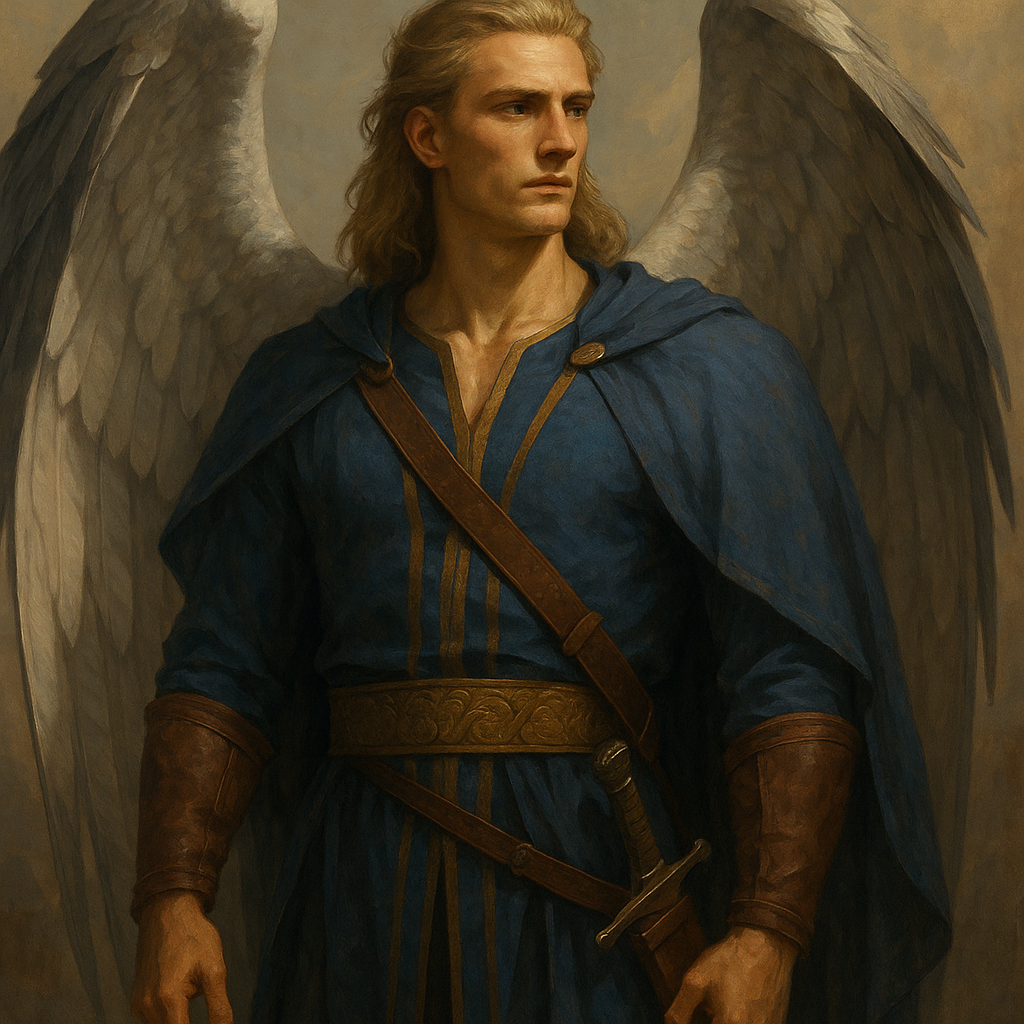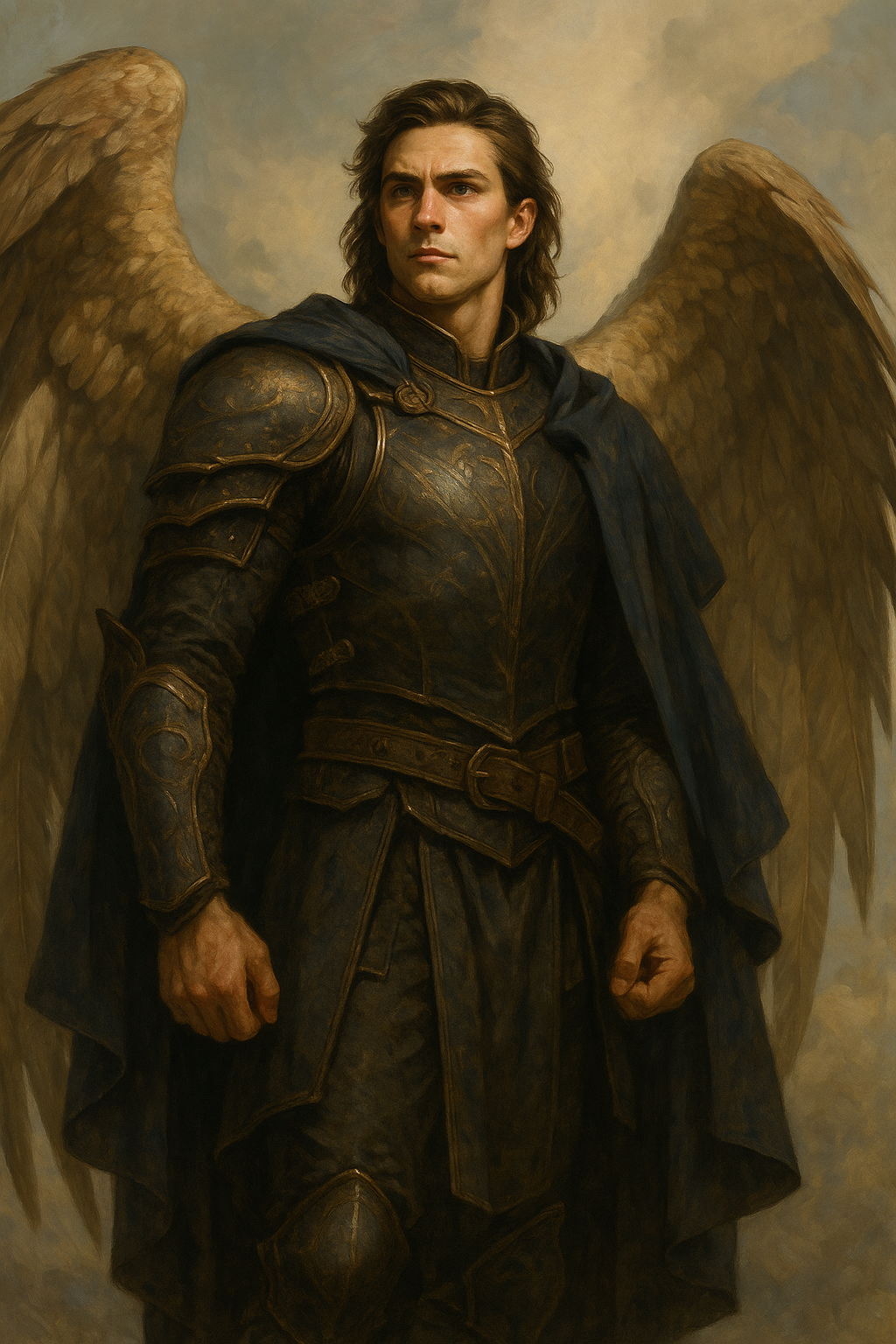Cascadian
The Cascadians are a disciplined and highborn winged humanoid species native to the mountainous realm of Cascadia. Renowned for their martial precision, artistic refinement, and reverence for flight, they are a proud and insular people shaped—both culturally and physically—by the dramatic heights of their alpine homeland. Their expansive feathered wings are more than just anatomical features; they are emblems of personal honor and familial reputation. In Cascadian culture, to soar is to fulfill one’s soul, and to fall—whether from disgrace or injury—is to lose a piece of oneself. Though aligned with the broader empire, Cascadians remain culturally distinct and fiercely loyal to their own traditions.
Basic Information
Anatomy
Cascadians are winged humanoids standing between 5'10" and 6'5" in height. Their builds are lean and muscular, shaped by a lifetime of aerial training and environmental pressure. Each individual possesses a large set of feathered wings, with an average wingspan ranging from 14 to 18 feet depending on heritage and personal conditioning. These wings extend from reinforced musculature across the upper back and shoulders, seamlessly integrated into their skeletal structure. Their feathers come in a range of natural colors including white, gray, sable, and deep mahogany. Their bone density is slightly lighter than standard humanoids, offset by powerful musculature adapted for high-altitude movement. Their facial features are sharp and aerodynamic, with keen eyesight and strong lungs evolved for thin-air conditions. Aging is similar to humans, though prolonged flight and environmental exposure often weather their appearance more quickly.
Genetics and Reproduction
Cascadians reproduce sexually and share a gestational period similar to humans, roughly nine months. Children are born without flight capabilities and require years of muscle development and balance training before taking their first true flight. Wing color, size, and strength are inherited traits, often signaling noble lineage or military pedigree. Though not caste-based by biology, family bloodlines are highly significant in determining opportunity and social trajectory. Births are celebrated with sky-naming ceremonies where a newborn’s first cry is echoed through the mountain winds as a sign of ancestral recognition.
Growth Rate & Stages
Cascadian children grow at a pace similar to humans, with key developmental milestones focused on physical coordination and aerial aptitude. Early childhood is dedicated to balance, strength, and wind-discipline training. Around the age of twelve, individuals enter the Skycall Rite—a ceremonial first flight overseen by community elders. Adolescence continues with martial or artistic specialization, culminating in adult roles by the age of eighteen to twenty-one. Lifespan is comparable to humans, averaging 75 to 85 years. By late age, wings often weaken and become more symbolic than functional, though the elderly are revered for their wisdom and endurance. Some high-status individuals undergo flight-forbidding ceremonies at the end of life, choosing to retire in mountaintop monasteries.
Ecology and Habitats
Cascadians are native to the high mountain ridges and dense alpine forests of Cascadia. Their society is vertically structured—literally—as cities are carved into cliffsides, suspended between peaks, and elevated on massive stone perches. They avoid lowland living, preferring thin-air environments and the open sky. Cascadian architecture is terraced and vertical, with wind tunnels and sky-platforms woven into public and private spaces alike. Their connection to the natural world is reflected in sacred sites like the Aerie Spires and the Emerald Canopy, where wind, tree, and stone are honored as spiritual forces. Cascadians live in harmony with native creatures such as glider-beasts and alpine sky-serpents, often incorporating them into ceremonies or mounted military units.
Dietary Needs and Habits
Cascadians are omnivores, but their diet favors lean, high-protein meals suited for maintaining flight muscle. They consume a combination of mountain game, freshwater fish, forest-grown vegetables, and high-caloric grains cultivated in vertical farms. Meals are often light but frequent, with food preservation and portability being cultural necessities for airborne patrols and ceremonies. Communal feasting is a rare but important ritual, usually tied to victory parades, operatic festivals, or rites of passage. While culinary refinement exists, practicality governs most food traditions.
Biological Cycle
Cascadian biology does not drastically shift with the seasons, though lifestyle and routines adapt to environmental changes. In winter months, high-fliers wear wing-wraps and heated cloaks. Aging affects flight strength, with many experiencing reduced lift power by their sixties. Ceremonial shedding of old flight feathers is common during life milestones, often followed by symbolic re-pluming rituals to mark transformation or ascension in social status. Due to their reliance on air currents and weather, many Cascadians track the winds and seasonal flow as part of their spiritual calendar.
Behaviour
Cascadian behavior is defined by restraint, precision, and personal responsibility. Emotional expression is typically reserved for performance or ritual, and even joy is tempered by etiquette. Cascadians are highly conscious of honor, appearance, and legacy. Shame—especially the kind tied to failed flight, public error, or familial disgrace—can cause lifelong consequences. They prize order and are rarely impulsive, with social rules governing most interactions. Pride, endurance, and clarity of purpose are considered fundamental virtues. While not overtly hostile, Cascadians are often perceived as distant or unwelcoming by outsiders.
Additional Information
Social Structure
Cascadian society is hierarchical, with nobility and military achievement forming the basis of social status. However, this hierarchy is not rigid. While noble birth offers initial privilege, true elevation comes through personal excellence—particularly in the arenas of flight, artistry, and warfare. Those who lose the ability to fly due to injury, age, or disability are treated with a mixture of reverence and sorrow. They are not dishonored, but their social roles shift dramatically. Positions of influence include generals, opera masters, wind-priests, and guildmasters, with the Winged King or Queen reigning as both monarch and symbolic embodiment of the skies.
Uses, Products & Exploitation
Cascadia produces highly sought-after goods including rare mountain lumber, sky-woven fabrics, ceremonial weaponry, and precision-crafted musical instruments. Cascadian silk and featherwork are prized across the Realms for their durability and beauty. Despite their aloofness, Cascadians have allowed selective trade under strict guild regulation. Their operas, sky-dances, and aerial duels are also cultural exports, with recordings and reenactments highly coveted. Exploitation of Cascadian labor is rare, as their insular society closely guards its people. Attempts to mimic or harvest their winged biology have ended in diplomatic fallout.
Geographic Origin and Distribution
Cascadians are indigenous to the 42nd Realm—Cascadia—a land of skybound cities and alpine forests. They do not live outside of their homeland in large numbers, and those who do are typically ambassadors, exiles, or cultural emissaries.
Average Intelligence
Cascadians possess intelligence equal to or exceeding that of other humanoid races, with particular strength in musical theory, wind mechanics, and aerial tactics. Their education systems focus on physical discipline, philosophical thought, and aesthetic appreciation. Intellectual expression often takes the form of song, poetry, or structured debate.
Perception and Sensory Capabilities
Cascadians have exceptional eyesight, with long-range focus and depth perception superior to that of most other species. Their inner ears are finely tuned to shifts in air pressure and wind turbulence, allowing them to sense changes in weather or motion. Hearing is acute, particularly in distinguishing tonal patterns and vocal clarity—skills crucial for aerial communication and artistry. While not inherently magical, some members of noble bloodlines claim wind-speech or air-sight, minor intuitive abilities tied to elemental reverence and ceremony.
Symbiotic and Parasitic organisms
Cascadians coexist with several native mountain species. Glider-mammals often share their high cities and are kept as companions or aerial scouts. No known parasitic organisms are endemic to their biology, though wing mites are a nuisance in crowded nesting areas. Wing-care is therefore both a practical and spiritual responsibility.
Civilization and Culture
Major Organizations
Cascadia’s major institutions include the Aerie Blades—its elite aerial military unit; the Harmonium Courts—where disputes are resolved through artistic performance rather than conflict; and the Guild of the Verdant Lash—a powerful economic body managing lumber, trade, and highland resource stewardship. Each of these organizations holds sway over different aspects of Cascadian life and contributes to its cultural cohesion.
Beauty Ideals
Beauty among Cascadians is defined by grace in motion, clarity of voice, and the condition of one’s wings. Symmetry of feather pattern, fluid aerial maneuvers, and musical skill are signs of personal refinement. Weathered features, such as wind-worn skin or silvering hair, are seen as beautiful markers of endurance and service rather than aging.
Gender Ideals
Cascadian society recognizes a wide range of gender ideals, but places emphasis on role fulfillment and capability over the individuals. Strength, elegance, and reliability are valued across all identities.
Relationship Ideals
Courtship in Cascadia is a dance of ritual and restraint. Aerial displays of skill, harmonized duets, and shared sky-journeys are common courtship practices. Partners often exchange feathers or write sky-poems—short pieces of verse released on colored paper to drift on mountain winds. While love is honored, partnerships are often judged by compatibility of soul, voice, and flight rather than raw passion.
Average Technological Level
Cascadians have achieved a highly developed level of cultural and practical technology. Their society blends traditional craftsmanship with limited but precise magical enhancement. They construct wind-tuned structures, precision-forged arms, and aerial combat equipment unrivaled in the Realms. While not industrial, Cascadia represents a pinnacle of applied artistry and natural engineering.
Culture and Cultural Heritage
Cascadian culture is deeply ceremonial. Every element of life—from combat to harvest—is accompanied by ritual and artistry. Storytelling is performed through dance, opera, and sculpture rather than text, and history is often preserved in performance. The “Sky Archives” of Velryn’s Crest contain generations of recorded operas and aerial dramas, some recounting historical truths, others mythologizing the deeds of ancient winged kings.
Common Customs, Traditions and Rituals
Cascadians celebrate the Skycall Rite for first flight, and the High Feast of Windchange at the shifting of seasons. Artistic duels in the Harmonium Courts are a common form of legal arbitration. When one dies, their feathers are cast into the wind from a sacred height—a final return to the sky. The Emerald Pilgrimage remains the most honored spiritual journey, taken at least once in a lifetime by those seeking soul-clarity or penance.
Common Taboos
Taboos include grounding someone without just cause, mocking a person’s wing condition, and desecrating wind-sculptures or sky-altars. Entering sacred heights without permission is considered both a legal and spiritual crime. Interrupting a performance in the Harmonium Courts is not only disrespectful, but may carry significant social consequence.
History
Cascadia was forged from a union of high-flying clans during the First Sky Accord, under the leadership of Winged King Velryn I. These early rulers believed they were chosen by the sky itself, a belief that still resonates in Cascadian philosophy. The realm remained aloof from larger conflicts for centuries, focusing on internal excellence and skyborn tradition. Eventually, Cascadia joined the Sapphire Empire after a ceremonial diplomatic tour by Queen Salena, who was said to have wept during an opera performed by the Crown’s Voice. Despite their imperial membership, Cascadians retain their cultural independence and continue to view themselves as stewards of a purer age.
5'10-6'5 feet
Varies widely
The Cascadian physique is defined by lean, efficient musculature built for endurance and controlled strength. Most develop a strong chest and back due to the demands of powered flight, as well as durable leg muscles for vertical takeoffs and perching on narrow ledges. Their limbs are long and balanced, optimized for aerial mobility, precise movement, and ceremonial combat. While muscular, they retain a sleek silhouette that prioritizes agility and stamina over bulk.
Cascadian skin tones range from pale ivory to sun-bronzed gold, often tinted by exposure to mountain winds and high-altitude sun. Their wings are feathered and come in hues including white, gray, deep sable, and rich mahogany—colors often seen as symbolic of their lineage, social role, or spiritual inclination. Unlike some species, Cascadians do not have natural skin markings, but many adorn themselves with painted or dyed wingtips during rituals or public ceremonies. Feathers may be ritually groomed, styled, or even inscribed with symbolic dyes that denote military rank or artistic affiliation.



